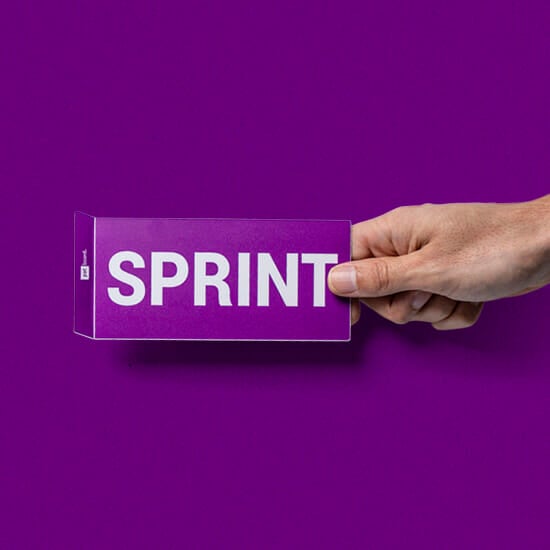Article
Scrum vs Lean
In this blog we compare two popular methods, Scrum and Lean. What exactly do these methods mean? And when do you use Scrum and when do you use Lean? Are there similarities between the methods and can you even use them in combination? In this blog you will find answers to all these questions.
What is Scrum?
Scrum is a simple framework for collaboration within product development teams. It originated within IT, where a product is, for example, a website or application. However, nowadays Scrum is used in all kinds of environments. For example, the remuneration policy or a budget can be drawn up with Scrum, but also a project like building a house can be carried out.
Scrum is best applied in projects in a complex environment where you cannot accurately predict the outcome and complete approach of a project. The framework has three roles and four meetings.
The roles within the Scrum team:
- The Product Owner: this person manages the work stock, has contact with stakeholders, and prioritizes the work still to be done so that the Development team delivers maximum value.
- The Development Team: this team carries out the work from the work stock as a multidisciplinary and self-organising team.
- The Scrum Master: this person is responsible to ensure that the entire team works together optimally. A Scrum Master does this by communicating the Scrum theory, facilitating meetings, coaching and removing obstacles for the team.
A Scrum team works in Sprints. Each Sprint has the following meetings: (1) a Sprint Scheduling in which the team sets a goal for the next Sprint and selects activities to finish in the Sprint, (2) a Daily Scrum in which the team meets briefly every day to see if they are still on track to achieve their sprint goal, (3) a Review in which the team presents delivered work to stakeholders to gather feedback and set priorities for the next sprint, and (4) a Retrospective in which the entire Scrum team – regardless of the content of the work – evaluates the collaboration.

What is Lean?
Lean is a philosophy of continuous improvement, which originated at Toyota but is now widely used in various work environments where people are constantly improving. Within Lean you improve by eliminating waste. After all, that is of no use to your customer. Eliminating waste leaves you more time for valuable work.
Lean has a number of principles:
- Value: first of all, you determine who your customer(s) is/are. Then you talk to them about what value means to them.
- Value stream: then you map out how this value is created by your organization, the team, or the process in which you operate.
- Flow: you optimize the delivery of value by creating a ‘flow’ in the process. This means that you think about how much capacity you need where to meet the demand. The goal is to allow customer requests to flow through a process as smoothly as possible, resulting in a short turnaround time.
- Pull: having stock is one of the biggest waste within Lean. By being able to deliver quickly when your customer is out of the process, you create Pull and an efficient process.
- Perfection: a large part of Lean is about ‘a little bit better every day’. The fifth principle is therefore perfection and continuous improvement initiatives.
When do you use what?
You use Scrum in:
- Complex projects
- Dynamic environment
- For products that are under continuous development, such as websites or applications
You use Lean for:
- Continuous improvement in the workplace
- Process optimisations
- Structuring operational work
Are there any similarities?
There are several similarities between Lean and Scrum:
- Both are part of the family of ‘Agile’ practices.
- In Lean you work with a multidisciplinary process team and in Scrum with a multidisciplinary project team.
- Both Scrum and Lean take the customer as their starting point. The customer determines what is value and what is not.
- Lean and Scrum both improve iteratively. In Scrum, there is a Review and a Retrospective, and within Lean, the principle of Perfection.
- Both are based on the power of employees. Both Scrum and Lean teams are self-organizing teams that get the tools they need to work together in this way.
Conclusion
Lean and Scrum are ways of working that have both similarities and differences. Both methods are extremely relevant in the present time. Scrum is used in teams with project-based work, where every sprint is different. Lean is used in operational teams that are familiar with fixed processes and want to serve customers better and better. A team with project-based and operational work can therefore work well with Scrum and Lean.
Rik van der Wardt is an Agile Coach & Trainer at Agile Scrum Group. Do you want to know everything about Lean and Scrum? Then follow the Agile & Lean training and be trained as Scrum Master and Orange Belt.
